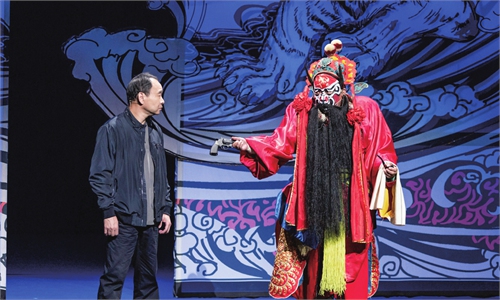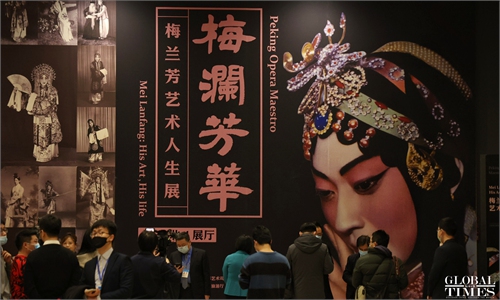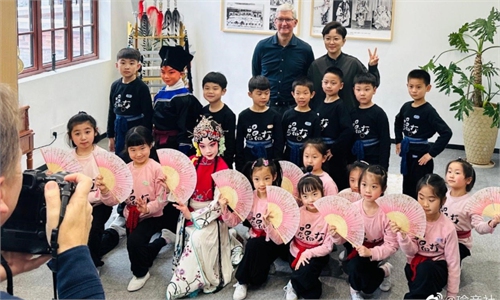ARTS / CULTURE & LEISURE
Man restores 20,000 Peking Opera photos from early 20th century to preserve art form’s precious moments
Bringing history back to life
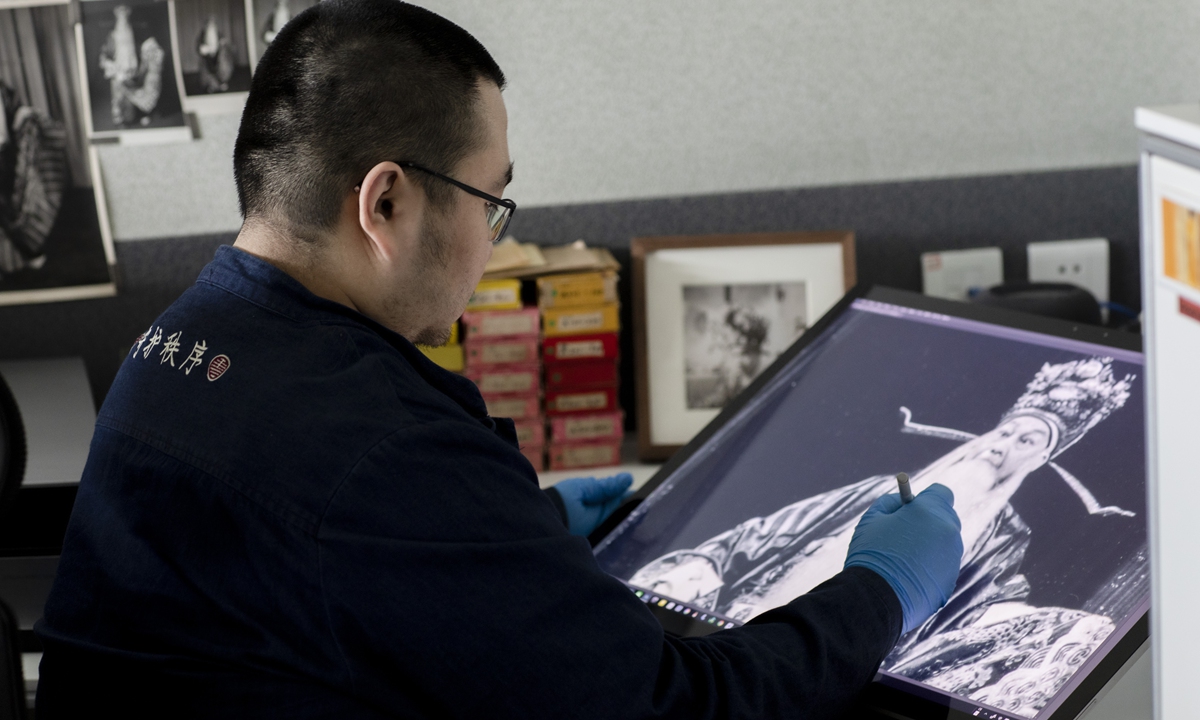
Yu Kaiyi restores a scanned copy of an old photograph of Peking Opera master Zhou Xinfang. Photo: Courtesy of Yu Kaiyi
Sitting at his desk as a bright light burns overhead, Yu Kaiyi taps on a computer screen with a pressure sensitive pen, carefully erasing the stains on a scanned copy of an old photograph of a Peking Opera performance. In his eight-square-meter office, Yu has restored more than 20,000 Peking Opera photos taken in the early 20th century.Restoring old Peking Opera photos has been Yu's main hobby since he started working at the archives room at the Shanghai Jingju Theatre Co in 2014, where he has access to more than 200,000 historical photos in the theater's collection.
Zhou Xinfang (1895-1975), Mei Lanfang (1894-1961), Ma Lianliang (1901-1966)… Numerous photos of the brightest names in Peking Opera history have become faded, smudged or damaged over the past decades. Through painstaking effort, they now have a refreshing new look.
Self-taught
Yu, 31, is probably the only staffer at a Peking Opera theater engaged in Peking Opera photo restoration.
With little theoretical or practical experience at the beginning, Yu, who majored in international politics, spent long, hard days learning how to restore old photos when he first started in 2015.
"I had to learn everything by myself," Yu recalled.
Instead of directly altering the original photographs, Yu first scans the old photos and then restores them by using software like Photoshop.
"I don't want to 'damage' the original photos," said Yu.
Yu learned Photoshop himself. He also learned how to better clean and store historical photographs and negatives, which involves small details such as maintaining a storage room at a certain temperature and getting the composition of cleaning fluid just right.
Each photo Yu has restored is a decades-old story. For example, a photo of Peking Opera master Zhou Xinfang performing Mingmoyihen, (Lit: Eternal Regret of the Late Ming Dynasty), was taken when Zhou performed the play soon after the September 18 Incident, also known as the Mukden Incident, which marked the outbreak of the War of Resistance against Japanese Aggression (1931-45).
Zhou performed the play, which tells the story of the final collapse of the Ming Dynasty (1368-1644), to call on the Chinese public to bravely fight back against Japanese aggression.
"There were many Peking Opera masters who insisted in creating and performing anti-Japanese aggression plays under the threat of death," Yu told the Global Times.
"The more I learn about them, the more I admire the grit they showed in those turbulent years."
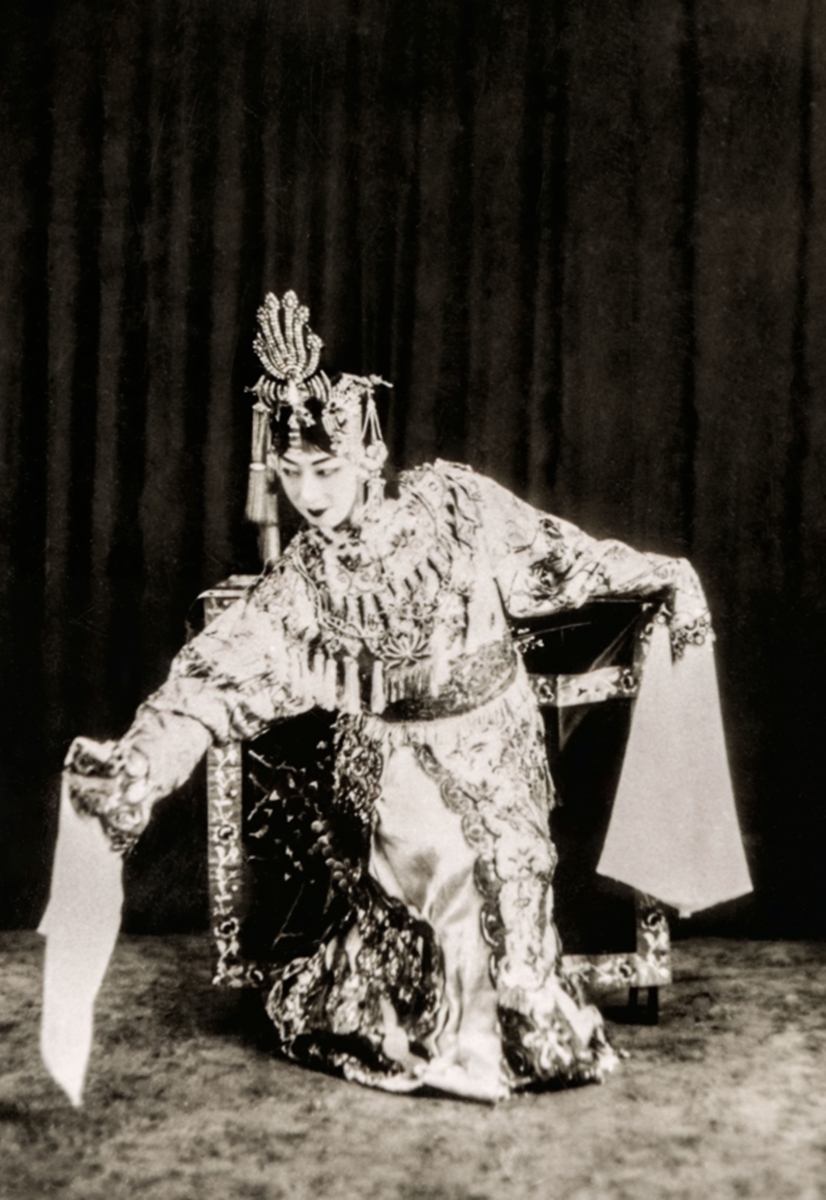
A stage photograph of Peking Opera master Mei Lanfang's in 1935 Photo: Courtesy of Yu Kaiyi
Photo restoration takes patience. Restoring a single photo can take Yu hours, or even days.Yet finding out when and where a photo was taken is even more difficult, as information about Peking Opera performances has gone missing over the years, with some being destroyed during the Cultural Revolution (1966-76). Yu usually has to research newspapers from the 1920s and 1930s at libraries to find possible clues.
Another way is talking to living Peking Opera artists from those years. Yu, whose father also works at the Shanghai Jingju Theatre Company, said he is lucky to be able to reach many senior performers over 80, who he finds are very willing to share the stories of their early years with the youngster.
"Senior performers worry that Peking Opera will gradually fade with their departure," Yu said.
"Zhou was the founder of Peking Opera's Qi School, and he performed some 650 plays in total," Yu noted.
"But today Qi School inheritors usually only perform 30 plays at most."
This is partly why Yu has decided to keep restoring old Peking Opera photos.
"The world is moving forward, but I want to go back to the roots [of Peking Opera] and grasp its most beautiful moments."
Cross barriers
Fortunately, with China's growing national confidence and interest in traditional culture, an increasing number of young people are learning about and becoming obsessed with Peking Opera.
The restored photos Yu has shared online have led many Gen Zs to learn more about Peking Opera. Some college students are inspired to reach out to old performers to complete oral histories.
"They are very passionate about that," Yu said, praising their efforts.
To publicize Peking Opera culture, Yu also holds lectures after work at schools.
His audience includes foreign students and company staffers in Shanghai. For expat audiences, Yu said he usually starts by sharing video clips of Peking Opera performances, which enables them to get a general impression of this art.
"What first attracted my foreign audience are the visual elements of Peking Opera, such as the performers' exquisite makeup, hair and costumes," Yu told the Global Times, noting that these are also the highlights of his lectures.
Yu shared with foreigners cases of how Eastern and Western art learned from each other in the early 20th century. The lip makeup of female roles in Peking Opera in the 1930s, for instance, adapted the "cupid-lip" from Hollywood actresses, which features a prominent cupid's bow along the upper lip and a more defined bottom lip.
No matter if it is in the East or the West, beauty is something that all people can feel, said Yu.
"The best art can cross language and cultural barriers," he noted.

